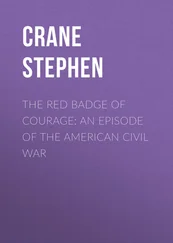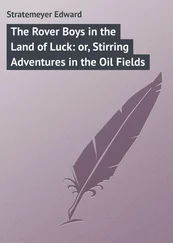Stephen Fry - The Ode Less Travelled - Unlocking The Poet Within
Здесь есть возможность читать онлайн «Stephen Fry - The Ode Less Travelled - Unlocking The Poet Within» весь текст электронной книги совершенно бесплатно (целиком полную версию без сокращений). В некоторых случаях можно слушать аудио, скачать через торрент в формате fb2 и присутствует краткое содержание. Жанр: Старинная литература, на английском языке. Описание произведения, (предисловие) а так же отзывы посетителей доступны на портале библиотеки ЛибКат.
- Название:The Ode Less Travelled: Unlocking The Poet Within
- Автор:
- Жанр:
- Год:неизвестен
- ISBN:нет данных
- Рейтинг книги:3 / 5. Голосов: 1
-
Избранное:Добавить в избранное
- Отзывы:
-
Ваша оценка:
- 60
- 1
- 2
- 3
- 4
- 5
The Ode Less Travelled: Unlocking The Poet Within: краткое содержание, описание и аннотация
Предлагаем к чтению аннотацию, описание, краткое содержание или предисловие (зависит от того, что написал сам автор книги «The Ode Less Travelled: Unlocking The Poet Within»). Если вы не нашли необходимую информацию о книге — напишите в комментариях, мы постараемся отыскать её.
The Ode Less Travelled: Unlocking The Poet Within — читать онлайн бесплатно полную книгу (весь текст) целиком
Ниже представлен текст книги, разбитый по страницам. Система сохранения места последней прочитанной страницы, позволяет с удобством читать онлайн бесплатно книгу «The Ode Less Travelled: Unlocking The Poet Within», без необходимости каждый раз заново искать на чём Вы остановились. Поставьте закладку, и сможете в любой момент перейти на страницу, на которой закончили чтение.
Интервал:
Закладка:
One more excerpt, this time from ‘The Caged Skylark’, which, as you will see, refers to us more than to the bird:As a dare-gale skylark scanted in a dull cage Man’smounting spirit in his bone-house, meanhouse, dwells.
How different from Blake’s Robin Red breast in its cage…
Five of those twenty-four syllables are slack and squeezed into the lightest of scudding trips (in order: a, -ed, a, -it, his ), while the in of both lines takes fractionally more push. The others, with varying degrees of weight that you might like to decide upon, are stressed: I have emboldened the words that seem to me to take the primary stress, but I could well be wrong. Incidentally, ‘bone-house’ to mean ‘body’ is an example of a kenning: it doesn’t take too much to see that the adjectival ‘dare-gale’ could easily cross over into another kenning too.
All of which demonstrates, I hope, the way in which Hopkins backwards-leapfrogged the Romantics, the Augustans (Pope, Dryden et al.), Shakespeare, Milton and even Chaucer, to forge a distinct poetics of stress metre from the ancient verse of the Welsh, Icelandic and Anglo-Saxon traditions. In turn, many British twentieth-century poets looked back the shorter distance to Hopkins, over the shoulders of Eliot, Pound and Yeats. I find it hard to read much of Ted Hughes, for example, without hearing Hopkins’s distinct music. Here are two fragments from ‘The Sluttiest Sheep in England’ for you to recite to yourself.They clatterOver worthless moraines, tossingTheir Ancient Briton draggle-tassel sheepskinsOr pose, in the rain-smoke, like warriors–…This lightning-broken huddle of summitsThis god-of-what-nobody-wants
Or this, from ‘Eagle’:The huddle-shawled lightning-faced warriorStamps his shaggy-trousered danceOn an altar of blood.
Certainly the sensibility is different: Hopkins is all wonderment, worship, dazzle and delight, where Hughes is often (but certainly not always) in a big mood: filled with disgust, doubt and granite contempt. Nonetheless, the Anglo-Saxon vocabulary, the generally four-stressed split line and use of alliteration and other ‘echoic’ devices (we’ll come to them in a later chapter) reveal much common ground. Many modern British poets show the influence of ancient forms filtered through Hopkins. We’ve already met this perfect Langlandian line from R. S. Thomas’s ‘The Welsh Hill Country’:
On a bleak background of bald stone.
From the same poem comes this:the leaves’Intricate filigree falls, and who shall renewIts brisk pattern?
We feel a faint echo of Hopkins there, I think, for all that it is more controlled and syntactically conventional. I am not denying the individuality of Hughes or Thomas: the point is that Hopkins cleared a pathway that had long been overgrown, a pathway that in the twentieth century became something of a well-trodden thoroughfare, almost a thronging concourse. Hopkins himself said in a letter to Bridges in 1888 after he had just completed the ‘Heraclitean Fire’ sonnet, inspired as it was by the distillation ‘of a great deal of early philosophical thought’:…the liquor of the distillation did not taste very Greek, did it? The effect of studying masterpieces is to make me admire and do otherwise. So it must be on every original artist to some degree, on me to a marked degree.
I have taken a little time over the style, purpose and influence of Hopkins because his oppo, as you might say, Walt Whitman–very different man, but so alike too–was busy in America tearing up the prosodic manuals round about the time Hopkins was experimenting with his sprung rhythms.
Whitman is considered by many to be the father of English language free verse 36: verse without traditional patterning, stanza form, rhyme, metre, syllabic count or regular accentuation. Since such verse is beyond the reach and aim of this book, much of the pleasures of Eliot, Pound, Lawrence, William Carlos Williams, the American ‘Open Field’ School and Whitman 37himself (and very real pleasures they are) will not be looked at here. As I have already said, I do not look down on free verse at all: I admire the poet who can master it.
There are two kingdoms of life: Flora and Fauna. In the natural history of poetry there are likewise two kingdoms: there is the kingdom of Accentual-Syllabic Verse and there is the kingdom of Accentual Verse.
Hang on a mo…
There are actually three kingdoms in the natural world–we have forgotten the kingdom of Fungi. And likewise there is a third kingdom of Poetry: the Kingdom of Syllabic verse.
VI
Syllabic Verse
These three then:
A accentual-syllabic verse —the number of syllables and stresses in a line is fixed.
B accentual verse —the number of stresses in a line is fixed, but the number of syllables varies (includes alliterative-accentual verse).
C syllabic verse —the number of syllables in a line is fixed, but the number of stresses varies.
A Meters and feet—iambs, pentameters, trochees, tetrameters and so on.
B Anglo-Saxon four-stress verse—Hopkins and much song, ballad, folk, hip-hop and nursery rhyme forms.
C ??
We have spent a fair amount of time looking at categories A and B but C remains unexplored.
Can there really be a form of verse where all that counts is the number of syllables in a line? No patterning of stress at all ? What is the point ?
Well, that is a fair and intelligent question and I congratulate myself for asking it. Much syllabic verse is from other linguistic cultures than our own. Perhaps the best known is the Japanese haiku which, as you may already know, is a three-line verse of five, seven and five syllables. In Japanese this syllable count is imperative and the form contains other rules which we can examine (as well as seeing whether it is feasible to write haikus in the strict Japanese manner in English) in the chapter on Verse Forms. The Tagalog tanaga is another such syllabic measured verse-form. Japanese and Tagalog 38are syllable-timed languages 39as are Spanish and many others European and worldwide. English, however, is stress -timed. What this means is beyond the scope of this book (or my poor grasp of phono-linguistics) but the upshot is that while verse ordered by syllabic count is popular in many other cultures, and indeed is often the norm, it is a rarity in English, since the lack of equal spacing between syllables in our stress-timed utterance renders such elaborate schemes very different from the foreign mode. They will never carry the music that native speakers of syllable-timed languages find in their syllabic verse, the English type involves a mostly visual engagement with the reader, sometimes resulting in a kind of concrete or shaped poetry. The moment a poet writing in this manner tries to arrange the stress– voilà! –we arrive back where we started at accentual-syllabic verse and our good friend the metric foot.
Nonetheless English-language poets have tried to write syllabic verse. The history of it may be stated briefly: with the exception of a few Elizabethan examples the mode did not come into prominence until Hopkins’s friend Robert Bridges wrote extensively on the subject and in the manner–including his unreadable ‘The Testament of Beauty’, five thousand lines of twelve-syllable tedium. 40His daughter Elizabeth Daryush (1887–1977) took up the standard and wrote many syllabic poems, usually in lines of equal syllabic count, managing artfully to avoid iambic or any other regular stress patterns, as in the decasyllabic ‘Still Life’, a poem published in 1936:Through the open French window the warm sun lights up the polished breakfast table, laidround a bowl of crimson roses, for one–a service of Worcester porcelain, arrayednear it a melon, peaches, figs, small hotrolls in a napkin, fairy rack of toast,butter in ice, high silver coffee-pot,and, heaped, on a salver, the morning’s post.
Читать дальшеИнтервал:
Закладка:
Похожие книги на «The Ode Less Travelled: Unlocking The Poet Within»
Представляем Вашему вниманию похожие книги на «The Ode Less Travelled: Unlocking The Poet Within» списком для выбора. Мы отобрали схожую по названию и смыслу литературу в надежде предоставить читателям больше вариантов отыскать новые, интересные, ещё непрочитанные произведения.
Обсуждение, отзывы о книге «The Ode Less Travelled: Unlocking The Poet Within» и просто собственные мнения читателей. Оставьте ваши комментарии, напишите, что Вы думаете о произведении, его смысле или главных героях. Укажите что конкретно понравилось, а что нет, и почему Вы так считаете.










